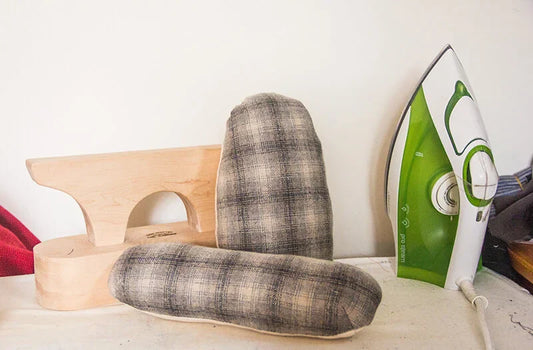If you’re learning to sew or exploring garment design, you may have come across the term toile. But what is toile exactly, and why do so many sewists and fashion designers consider it an essential step in the process? At Sewpronto, we believe understanding toile is a game-changer for anyone who wants to sew with confidence, whether you’re following sewing patterns for beginners or drafting your own designs.
What is Toile?

In sewing, a toile is a test garment made from inexpensive fabric—usually muslin or calico—used to check the fit, design, and construction of a pattern before cutting into the final fabric. It’s often called a muslin in the U.S., while in Europe the term toile is more common.
A toile is like a “prototype.” Just as architects create models before constructing buildings, sewists use a toile to identify issues before committing to their main fabric.
The History and Origin of Toile
The word toile comes from the French word for “cloth” or “linen.” Historically, fashion houses in Paris relied on toiles to perfect couture garments before cutting into luxurious silks and velvets. Today, both professional designers and home sewists continue this tradition.
It’s worth noting that toile de Jouy—a French printed fabric—is a different concept and not to be confused with sewing toile.
Why Toile Matters
Making a toile may feel like an extra step, but it can transform your sewing experience:
-
Fit perfection: Adjusting bust, waist, hip, and sleeve measurements before sewing saves frustration.
-
Design testing: Experiment with neckline shapes, dart placement, or skirt lengths.
-
Fabric savings: Avoid wasting expensive fabrics on mistakes.
-
Skill-building: Toile is the safest way to practice tricky techniques such as zippers, pleats, or button plackets.
Skipping a toile often leads to sewing mistakes that are harder to fix later—sometimes ruining a whole project.
Different Types of Toile
Not all toiles are the same. Depending on your project, you may create:
-
Basic fit toile: Simple stitches to check fit and shape.
-
Detailed toile: Includes darts, pleats, and zippers to test construction methods.
-
Half toile: Used when testing only one side of a symmetrical garment.
-
Commercial toile kits: Some designers sell pre-marked toile fabrics for learning and practice.
Pros and Cons of Using Toile
Advantages:
-
Saves time and fabric in the long run.
-
Builds confidence in new techniques.
-
Allows experimentation with design details.
-
Essential for fitted garments.
Disadvantages:
-
Adds an extra step to the process.
-
Requires additional fabric (though inexpensive).
-
Can feel repetitive for simple designs.
For quick, casual garments, you may choose to skip the toile. But for complex projects, the benefits outweigh the drawbacks.
Practical Guide: How to Make a Toile
-
Cut your pattern pieces from muslin, calico, or another low-cost fabric.
-
Assemble the garment with simple straight stitches—no seam finishing needed.
-
Try it on (or fit it on a dress form). Pin or mark areas that need adjustment.
-
Modify the toile by slashing, pinning, or adding fabric where necessary.
-
Transfer adjustments to your paper pattern before cutting the final fabric.
This process works whether you’re learning how to sew clothes from scratch or refining a design you’ve already drafted.
Toile in Fashion Design vs. Home Sewing
-
In fashion houses: Toiles are critical for haute couture, often made repeatedly until the designer is satisfied.
-
In home sewing: Toiles are practical for testing unfamiliar patterns, adjusting sizing, or working with fabrics that are expensive or tricky.
Learning More About Toile
If you’re just beginning, start small. Pick projects from sewing books for beginners and pair them with a simple toile to test your skills. Using sewing patterns for beginners alongside a toile will help you understand how flat paper patterns become 3D garments.
Over time, you’ll see toile-making not as a delay but as an investment in better sewing.
FAQs About Toile
What fabrics are best for making a toile?
Muslin is the traditional choice for making a toile due to its affordability and ease of use. However, you can also use other inexpensive fabrics like cotton or linen.
How many toiles should I make?
While it depends on the complexity of your design, one or two toiles are usually sufficient to get the fit right. More complex designs may require additional prototypes.
Can I use my toile as a final garment?
Yes, many sewists repurpose their toiles into wearable garments, especially if they love the design and fit. Just be sure to finish the seams properly.
How do I care for my toile?
Care for your toile as you would for your final garment. Follow the fabric care instructions and wash it gently to maintain its shape.
Conclusion
Understanding what toile in sewing is and how to use it in your sewing projects can greatly enhance your experience as a DIY enthusiast. By creating toiles, you can refine your fit, explore new designs, and contribute to the slow fashion movement. Ready to dive deeper into your sewing journey? Explore our collection of sewing patterns at Sewpronto and start creating your custom garments today!




